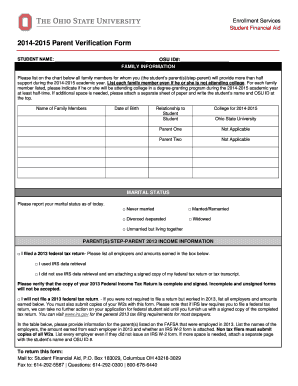
Since the FSA ID is unique to each individual accessing the site, students and parents must have their own IDs. It also serves as your secure online signature on legally binding documents, such as the FAFSA and Master Promissory Note for your student loans.

#Fafsa verify email verification#
"High school seniors and other first-time college students should apply to at least four institutions so that they have multiple financial aid packages to compare," she says.Īnd while the odds of verification may be higher than students might like, putting in the effort to complete the FAFSA is still the best way for students to access the largest source of financial aid in the country.Your FSA ID is made up of a username and password that lets you log into your accounts and electronically sign documents, while removing all personally identifiable information.īecause the FSA ID doesn’t require you to provide sensitive information each time you sign in, it offers a secure way of accessing and updating your account. Warick adds that aspiring college students hoping to secure the strongest financial aid package should do so by applying to several schools and leveraging offers as a negotiation tool. Early completion aids in access to this aid, and also in helping students applying to multiple institutions have time to weigh their options." Early – some financial aid is first-come, first-served. "Accuracy – students should not estimate, but rather use the IRS Data Retrieval Tool or copy numbers exactly from their tax returns and other financial documents. "Students can best benefit from the FAFSA by completing it as accurately as possible, as early as possible, and by sending it to several schools," she says. And if their circumstances have changed since they completed the FAFSA, or since the tax year the FAFSA applies to, they should reach out to the financial aid office for the possibility of a revision to their financial aid eligibility."Ĭarrie Warick, director of policy and advocacy at NCAN, says attention to detail is key.

They should pay attention to deadlines for institutional and state financial aid, since those vary. "The same is true if they are selected for verification. "Students should complete the FAFSA accurately and ask the financial aid office if they're having trouble with answering any of the questions," she says. To avoid what can be a burdensome FAFSA verification process, Desjean says students should create lines of communication with their college's financial aid offices. The agency audited 0.45% of individual tax returns in fiscal year 2019-down more than half from what it was in 2010, when 1.11% of taxpayers were audited. The IRS attributes this drop to budget and personnel reductions. The odds of having your taxes audited by the IRS have fallen significantly over the past decade. "The IRS audit rate is much lower (less than 1%), but I don't know their justification for that rate." "The Department of Education cited as justification for their 18% selection rate that they conducted a cost-benefit analysis and determined that the cost of performing verification exceeds the benefits when it selects more than 18% of FAFSA filers," says Jill Desjean, policy analyst for NASFAA.

In recent years, as many as 90% of Pell-eligible students were required to verify their FAFSA details. And students who receive Pell Grants (federal scholarship funds given to low-income students) are significantly more likely to be selected for verification. In December 2020, the Department of Education's Federal Student Aid office announced a new goal to verify 18% of FAFSA applicants. "But the department has not extended such relief to the 2022-23 FAFSA filing cycle, which began on Oct. Additionally, ED has suspended some types of verification for the remainder of the 2021-22 award year as a way to provide students some relief during the COVID-19 pandemic," reads the report. This was down to a low of 17.11% for the first three-quarters of the 2021-22 cycle. ED verified as much as 38% of FAFSA filers during certain cycles over the past decade. Department of Education (ED) has set goals to decrease overall verification rates. Students can be asked to verify details such as household size, the number of family members in college, adjusted gross income and/or their high school completion status. Individual colleges and universities are then responsible for conducting each verification process.

The Department of Education flags students for verification using an annually adjusted algorithm. After students submit their FAFSA to the Department of Education, students' information is sent to all institutions the students have listed on their application.


 0 kommentar(er)
0 kommentar(er)
